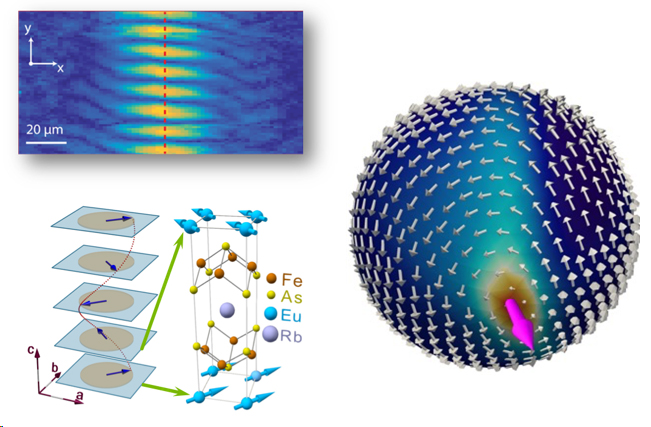Quantum materials derive their unique properties from the diverse behavior of electrons in correlated, topological, or highly localized configurations. Collective behavior leads to coherent states such as superconductivity and magnetism; relativistic band structures lead to topologically protected surface states; and isolated spins in nitrogen-vacancy centers lead to quantum bits. Competing or cooperative interactions among electrons and spins, phase heterogeneity, defect and interfacial quantum states, and strain-driven responses are among the key underpinnings of the complex physics (and complex structures) of quantum materials, especially materials for quantum information science.
MSD research in this area investigates the complex phenomena arising from interactions in novel bulk materials, thin films, heterostructures, and quantum nano- and mesoscopic systems. We focus on the role of competing interactions and phase competition in generating novel phenomena, such as unconventional superconductivity and magnetic order. Our research also focuses on quantum information science platforms, with an emphasis on understanding materials, materials defects, and the interaction of spin-based qubits with collective excitations (phonons, magnons) as a pathway to quantum transduction.
MSD has a considerable footprint and stature in the study of quantum materials. Superconductivity, correlated electron science, quantum magnets, low-dimensional quantum structures, and topological matter are a few of the areas in which we have demonstrable leadership. These research areas position us to discover and impact new frontiers. Importantly, they typically cross-cut multiple programs and entail materials discovery by exploiting our unique capabilities for controlling and understanding phases and defects, bespoke approaches for exploring the impact of disorder and defect correlations on quantum states, coherent X-ray probing of structure and dynamics, novel developments in structured electron waves to create and explore spin-based topological excitations, and artificial intelligence-based approaches to understanding quantum ordered states. Links to the Midwest Integrated Center for Computational Materials (MICCoM), with its emphasis on spin-based quantum information science, provide a computational underpinning to both experimental and theoretical work in MSD.
